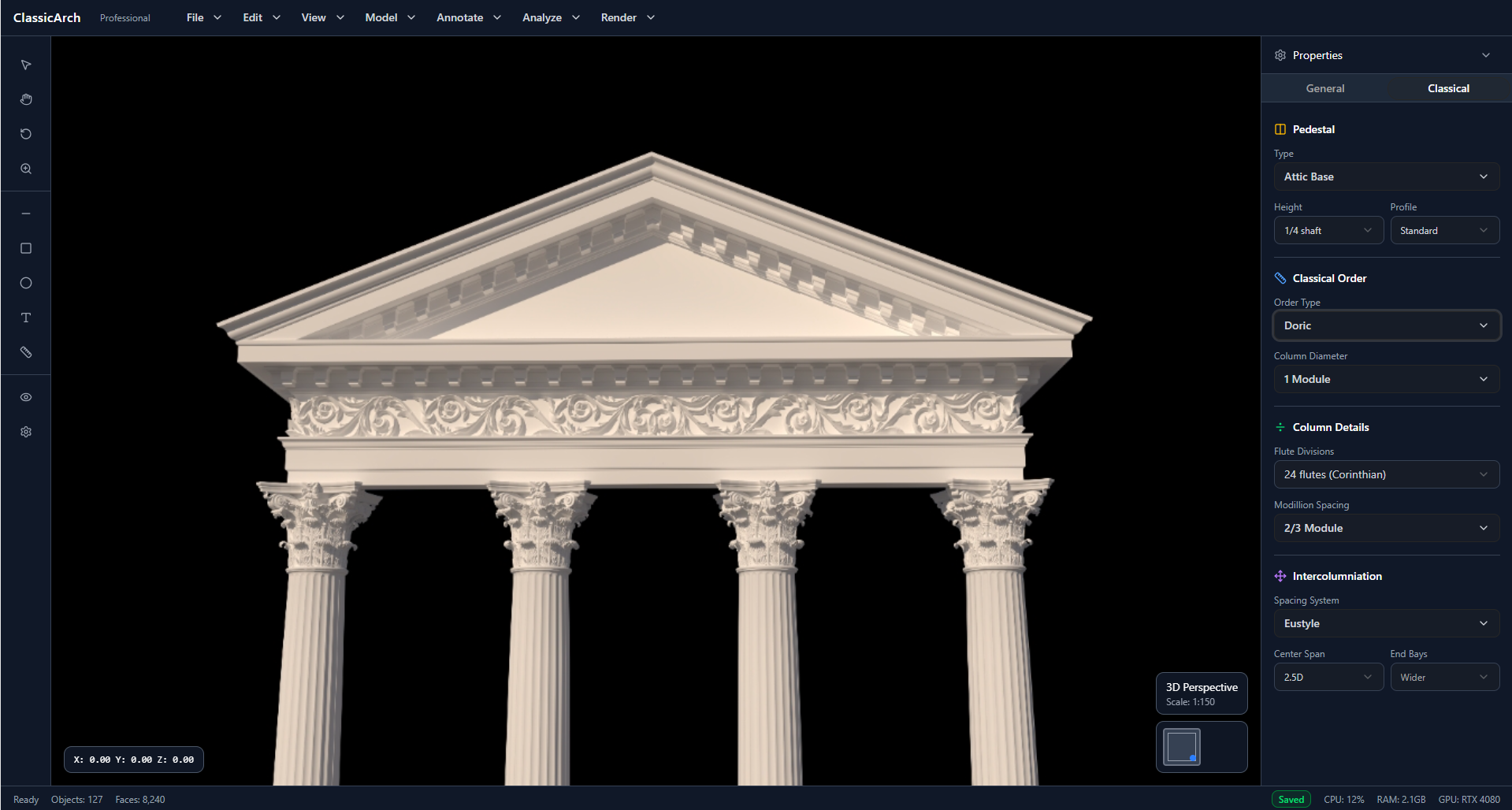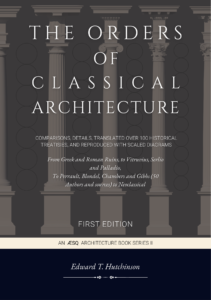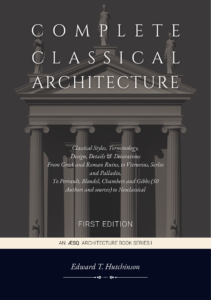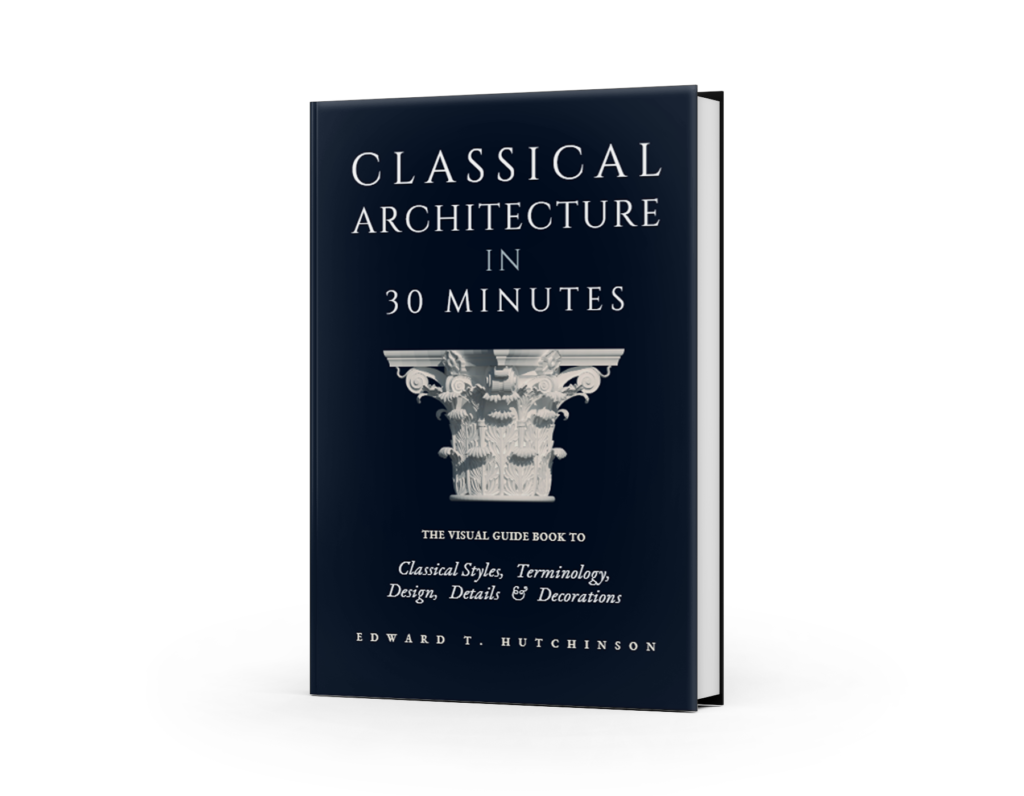Classical architecture is a timeless design tradition now enjoying renewed attention and a strong resurgence in education, public life, and planning policy. Yet most introductions are too dense or academic for today’s students. Classical Architecture in 30 Minutes fills this gap. It is a concise, visual guide focused on design elements, balancing clarity with rigor, and supporting students and educators across architecture and related fields, that otherwise do not have access to such information.
The book introduces the key elements of classical architecture, from overarching design styles like Greek and Neoclassical to the fundamental building blocks of the style. It presents classical construction primarily as a practical design vocabulary, rather than solely for academic study or historical appreciation. The structure is designed for quick understanding, allowing readers to grasp key concepts without unnecessary delay. The book presents over 450 3D renders, drawings, and images of the essential elements of classical architectural design, each paired with concise explanations that clearly convey the purpose and underlying principles of each feature. Below is a brief introduction to the topics covered:
Recent USE






Memberships
Memberships
One-time purchase granting unlimited access to the rights to use the work for educational purposes by any number of students and staff at a single institution.
Recurring subscription granting rights to use the work for educational purposes by any number of students and staff at a single institution.
Five-yearly subscription granting uninterrupted access to the rights to use the work for educational purposes by any number of students and staff at a single institution.
Recurring subscription granting rights to use the work for educational purposes by any number of students and staff at a single institution.



Savings: the eBook is 4.99 40 students – 200$ per semester. in addition to the support, and PNG downloads for lectures.
*Future content includes all book updates and editions, as well as additional learning materials, such our 3D interactive web software and classical database (below), reading lists and the in-production book The Classical Orders.
**Licence is mandatory to comply with copyright and distribution laws, and our Terms and Conditions.
Savings: the eBook is 4.99 40 students – 200$ per semester. in addition to the support, and PNG downloads for lectures.
*Future content includes all book updates and editions, as well as additional learning materials, such as ClassiCad, our interactive 3D web software and classical database, reading lists, and the in-production book The Classical Orders.
**Licence is mandatory to comply with copyright and distribution laws, and our Terms and Conditions.



Savings: the eBook is 4.99 40 students – 200$ per semester. in addition to the support, and PNG downloads for lectures.
Sample PAges
Reviews
“Forgive my directness, but simply, your book is exceptional. It is so exceptional that I will be requiring it for my courses this Fall semester.” (Keith Loftin, University of Colorado, Denver – June 2025).
“The best introduction to classical architecture available” (Wished to remain anonymous – July 2025).
